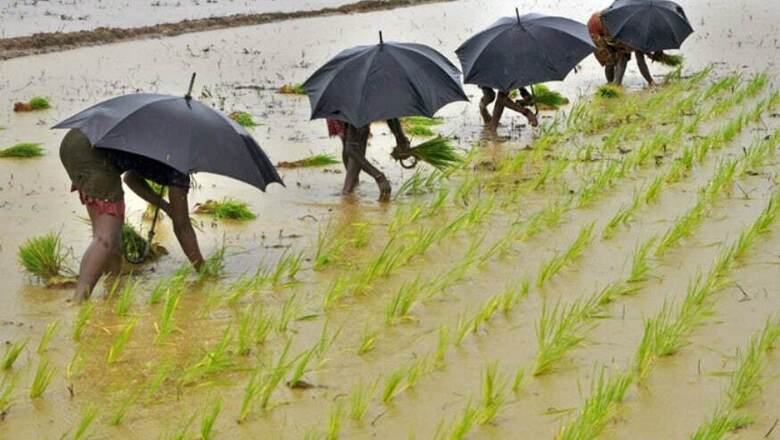
views
New Delhi: The farmers planted an array of summer-sown crops on 56.7 million hectares, down 6.9% year on year, agriculture ministry data showed on Friday, narrowing the sowing gap estimate from the previous week.
Farmers start planting rice, corn, cotton, soybeans, sugarcane and peanuts among other crops from June 1, when monsoon rains are expected to reach India. Nearly half of India's farmland lacks irrigation and planting usually lasts until July.
The Ministry of Agriculture & Farmers' Welfare keeps updating the provisional sowing figures beyond July as it gathers more information from the state governments. The planting figures are also subject to revision depending on progress of the June-September monsoon season.
Planting of rice, the key summer crop, was at 14 million hectares on Friday, against 15.1 million hectares at the same time last year, the ministry said. Corn planting was at 5.5 million hectares, almost unchanged from the same period last year.
The area planted with cotton was at 9.6 million hectares, down from 9.3 million hectares at the same time last year.
Sowing of soybeans, the main summer oilseed crop, was at 8 million hectares, compared with 9 million hectares at the same time in 2018.
Other crop plantings, such as pulses and sugar cane, were also down year on year.
India's monsoon rains were 20% below average in the week ending on Wednesday, with summer showers having turned patchy over the central, western and southern parts of the country.
Overall, India has received 16% lower than average rain since the monsoon season began on June 1.
Monsoon typically brings rainfall between 96% and 104% of a 50-year average of 89 cm (35 inches) during the four-month season, according to India's weather office.
Water levels in India's main reservoirs were at 24% of their storage capacity, against 32% at the same time last year, the latest government data shows. The average for the past 10 years is 28%.













Comments
0 comment